Caryl Phillips - The Nature of Blood
Здесь есть возможность читать онлайн «Caryl Phillips - The Nature of Blood» весь текст электронной книги совершенно бесплатно (целиком полную версию без сокращений). В некоторых случаях можно слушать аудио, скачать через торрент в формате fb2 и присутствует краткое содержание. Год выпуска: 2008, Издательство: Vintage, Жанр: Современная проза, на английском языке. Описание произведения, (предисловие) а так же отзывы посетителей доступны на портале библиотеки ЛибКат.
- Название:The Nature of Blood
- Автор:
- Издательство:Vintage
- Жанр:
- Год:2008
- ISBN:нет данных
- Рейтинг книги:5 / 5. Голосов: 1
-
Избранное:Добавить в избранное
- Отзывы:
-
Ваша оценка:
- 100
- 1
- 2
- 3
- 4
- 5
The Nature of Blood: краткое содержание, описание и аннотация
Предлагаем к чтению аннотацию, описание, краткое содержание или предисловие (зависит от того, что написал сам автор книги «The Nature of Blood»). Если вы не нашли необходимую информацию о книге — напишите в комментариях, мы постараемся отыскать её.
The Nature of Blood — читать онлайн бесплатно полную книгу (весь текст) целиком
Ниже представлен текст книги, разбитый по страницам. Система сохранения места последней прочитанной страницы, позволяет с удобством читать онлайн бесплатно книгу «The Nature of Blood», без необходимости каждый раз заново искать на чём Вы остановились. Поставьте закладку, и сможете в любой момент перейти на страницу, на которой закончили чтение.
Интервал:
Закладка:
IN MARCH of 1480, the people of the small town of Portobuffole, near Venice, were preparing their houses for the much anticipated arrival of relatives. The winter was at an end and the weather had already turned mild, but, more importantly, it appeared that the famine which had troubled the lives of these people for the past three years was now over. There were provisions for everybody, although the poorer members of the community could not afford to indulge themselves with luxuries. However, every household could boast either pork or eggs, or both, and the eager townsfolk now waited for the priest's blessing of house and food before completing their tables with delightful flowers and scented herbs.
The women, in particular, watched the streets in a state of anxiety, for the majority of them were looking for their men. The Most Serene Republic of Venice had recently made a reluctant peace with the infidel Turk and, once again, the Venetian army was being demobilized. Every day, the women expected to see their loved ones, and they contemplated the streets in anticipation of a joyful reunion. There was, however, a further reason why the streets were being scrutinized in such a concentrated manner. After raging for almost a full year, the plague had mercifully ceased, but the old suspicion of strangers remained. So, even as they looked for their men, the women also kept a sharp eye open for those they did not recognize. And then, on one evening, shortly before sunset, a young beggar boy entered the town, but sadly the women did not follow him closely. The boy's hair was blond and unkempt, his tattered linen skirt brushed his bare feet, and he carried a worn sack across one shoulder. One woman did speak to him, for he asked her the name of the town, and the woman remembered that the boy's difficult foreign accent reminded her of her husband's when he had first been recruited to the region by the Venetian army. There was one other woman who saw the boy, but unfortunately she did not speak to him.
The blacksmith claimed he had been busily shoeing a horse at the time that he saw the young vagabond. The boy approached him cautiously and asked him the way to the Jew Servadio's home. It was nearly dusk, and the blacksmith remembered that he simply pointed the wretch in the appropriate direction. The blacksmith then returned to the urgent business of shoeing the horse, in order that he might return it to its impatient owner before nightfall. It was important that the child had also been seen by a man, albeit the temperamental and somewhat unpredictable blacksmith, for in these times nobody would accept the word of a woman unless it had been substantiated by a man. This 'male' sighting of the boy became even more important when one considers that the innocent beggar child, who that day entered the small town of Portobuffole, was never seen again.
Portobuffole was a small town of less than a thousand people, some living inside and some outside the boundary walls. However, despite its small size, it was well known as an important administrative and commercial centre which had jurisdiction over fifteen or so neighbouring villages. Upon entering the town, one found a square, and in the town square, between the gates in the boundary wall and the town hall, was the hub of Portobuffole: the warehouse. The building boasted an ugly veranda, but beneath the veranda was a large counter, where one could negotiate for loans and securities. On the stone wall behind this counter was a list which plainly indicated the current taxes for those who wished to borrow. If one entered the town square and looked to the far left, one would see the synagogue and the large and comfortable homes of the principal Jewish moneylenders, Servadio and Moses. These homes were easily distinguishable by the cylindrical containers which held Hebrew scripture written on parchment. By law, these had to be placed to the right of a Jew's front door.
The leader of Portobuffole was Andrea Dolfin, a Venetian aristocrat, chosen by the Signoria of Venice. It was understood that he would remain in office for some sixteen months in return for a modest salary, out of which he had to support a deputy, a notary, three pages, three horses and a servant boy. Andrea Dolfin worked together with a local civic body which comprised members of the most important families, but, unlike other towns, these members were not required to be noblemen. The democratic ideals of Portobuffole determined that all men over a certain age could participate in the development of the town and, with some justification, the townspeople of Portobuffole were proud of the manner in which their town was governed.
The Jews had first begun journeying to Portobuffole in 1424, many of them migrating from Colonia in Germany. Back in 1349, the Christian people of that region had suddenly become incensed and irrational from fear of the plague, and the Jews began to suffer as this Christian hysteria manifested itself in violence. Eventually the Jews could take no more and they barricaded themselves into their large synagogue, set fire to it, and recited moribund prayers to each other as they waited for the end. The few Jews that survived this catastrophe remained in the region, but finally they were driven out. And then, a few years later, they were once more readmitted as though nothing had ever occurred. Such is the way of the Germans with their Jews. In 1424, the Jews of Colonia were finally expelled for good, and most decided to travel to the Republic of Venice, where it was rumoured that life was more secure.
Initially, the people of the republic accepted the Jews from Colonia with all the mistrust that is common among people who do not know one another. Sadly, as the years passed, this mistrust did not abate. It became apparent that the Jews wished to speak only among themselves. Further, they chose not to eat or drink with the Christians, and they refused to attend to their heavy German accents. They looked different, the average one being between thirty-five and fifty years of age, pale and heavy under the eyes, with a long untidy beard. And even at the height of summer, these men always wore their dark grey, heavy wool coats and their unseemly black hats. Although their women dressed with more propriety, occasionally wearing handkerchiefs on their heads like the Christian women wore in church, even these gentler creatures refused to join in the most innocent female talk about household matters or children. The Jews ate neither pork nor red meat sold from a butcher, preferring instead to slaughter live animals and then drain the blood. They washed their clothes on Sundays and rested on Saturdays, and eight days after a son was born they had huge celebrations in honour of the boy's circumcision. Those who glimpsed the Jewish men praying claimed that they covered their whole bodies, including their heads, with a large shawl that made them appear both animal-like and foolish. These Jews arrived as foreigners, and foreigners they remained.
In Germany they frequently murdered the Jews, because the Christian people claimed (and provided good evidence) that the Jews spread the plague by poisoning the wells with whatever came to hand: spiders webs, lizards, toads and, most commonly, the severed heads of Christians. Not only had the Jews killed Jesus Christ, but during Holy Week it was common practice for them to re-enact this crime and kill a Christian child in order that they might draw out the fresh blood and knead some of it into the unleavened bread which they ate during their own Easter celebration, known as Passover. Their feast was designed to celebrate the moment in their history when they claimed that the Red Sea turned into blood and destroyed the Egyptian army, hence their need for fresh blood. However, this murderous act also demonstrated their hatred of Christianity. At the moment at which they stabbed the innocent Christian child, the Jews were known to recite the words: 'Even as we condemned the Christ to a shameful death, so let us also condemn this innocent Christian, so that, uniting the Lord and His servant in a like punishment, we may retort upon them the pain of that reproach which they impute to us.' In addition to using this blood in the preparation of bread, it was widely known that the Jews used fresh Christian blood for anointing rabbis, for circumcision, in stopping menstrual and other bleedings, in removing bodily odours, in making love potions and magical powder, and in painting the bodies of their dead.
Читать дальшеИнтервал:
Закладка:
Похожие книги на «The Nature of Blood»
Представляем Вашему вниманию похожие книги на «The Nature of Blood» списком для выбора. Мы отобрали схожую по названию и смыслу литературу в надежде предоставить читателям больше вариантов отыскать новые, интересные, ещё непрочитанные произведения.
Обсуждение, отзывы о книге «The Nature of Blood» и просто собственные мнения читателей. Оставьте ваши комментарии, напишите, что Вы думаете о произведении, его смысле или главных героях. Укажите что конкретно понравилось, а что нет, и почему Вы так считаете.
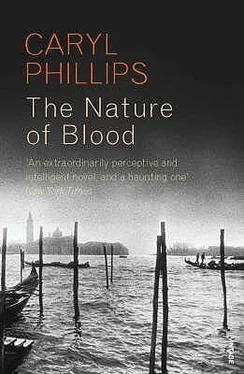
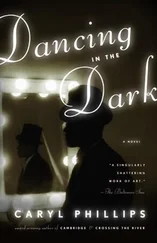

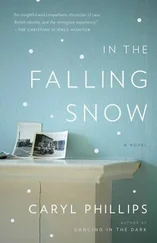
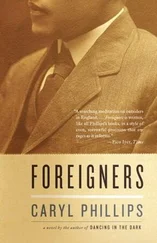

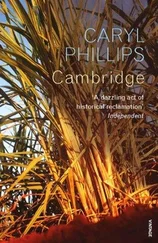

![Unknown - [Carly Phillips] The Bachelor (The Chandler Brothe(Bookos.org) (1)](/books/174132/unknown-carly-phillips-the-bachelor-the-chandle-thumb.webp)



